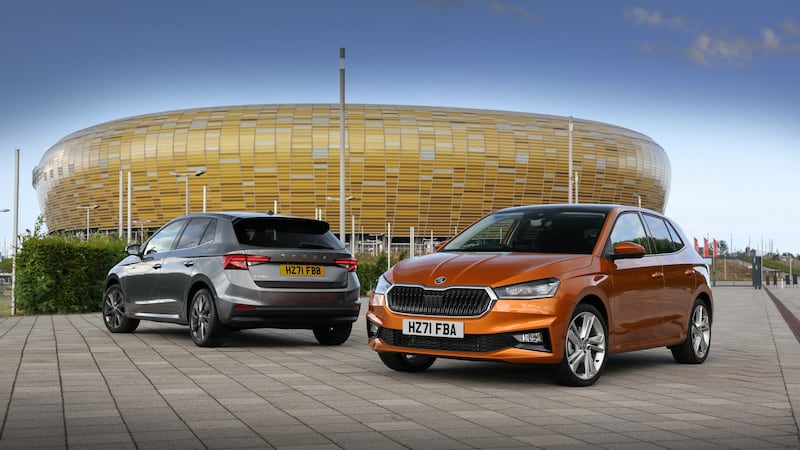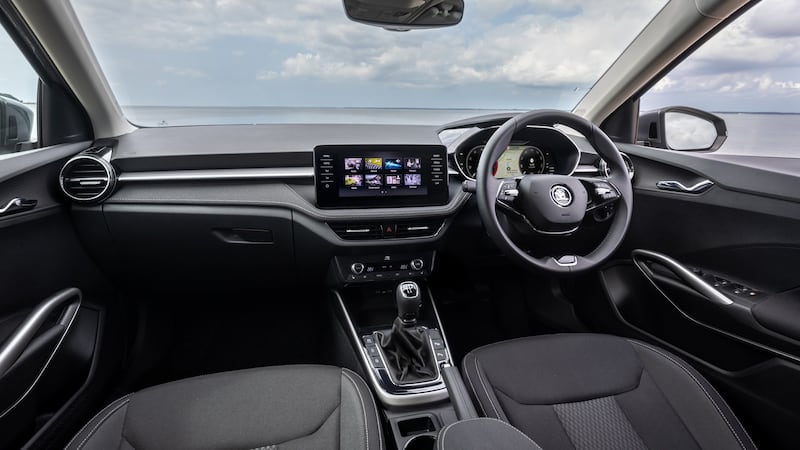I've always loved that famed line of Milton: "They also serve, who only stand and wait." Of course, Milton certainly wasn't referring to a small Czech hatchback, but in some distantly metaphorical way, he might have been.
If you follow the hype and hyperbole, the car market is about one thing and one thing only these days. Electric cars. For a car to poke its nose above the headline parapet, it must have a battery, and I mean one bigger than the 12-volt lump you use to engage the starter motor.
This autocracy of publicity, though, disguises a deeper truth. Electric cars are the future, almost unquestionably, but they are not quite the present. Even with the explosion in electric car sales, they still represent a mere one tenth of the new car market, leaving a yawning 90 per cent chasm for “ordinary” cars to fill.
The new Skoda Fabia is very, very ordinary. Please note; I don’t mean that as a criticism, nor even faint praise of the most damning variety. In fact, I mean it as something of a celebration.

In a world of over-styled, over-marketed, and distinctly under-engineered crossovers and SUVs, the Fabia – a humble five-door family hatchback – feels ordinary in the same way that a well-made cup of tea is ordinary. Both are lacking in needless fripperies or pointless innovation. Equally, both are rather wonderfully refreshing.
This is the first new Fabia since 2014, and that previous Fabia was older than that in its bones, being based in part on the old PQ26 VW Group platform that dated back to 2009.
This new Fabia gets the same MAB-A0 platform as already essayed by the likes of the VW Polo, T-Cross, and Taigun; the Seat Ibiza, and Arona; and Skoda's own Kamiq crossover. And, just as the Kamiq is rather more usefully practical in terms of sheer interior square footage than the Seat and VW equivalents, so too is the Fabia.
Hoick up the bootlid (done manually – no pointlessly heavy, gimmicky powered tailgates here), and inside you’ll find 380-litres of luggage space. To put that into perspective, that’s the same volumetric offering you’d get from a VW Golf hatchback, a car both physically and fiscally higher up the motoring food chain. For reference, that’s 30-litres more than you’d get in an otherwise mechanically identical Polo.
In the back seats, the news is slightly less rosy. If the Fabia’s driver or front seat passenger are on the tall side, then those sat in the rear will find their knees in a close relationship with the backs of those front seats. It’s not quite cramped – that would be an unfair description – but it’s certainly not overly-generous in space terms. This is the one, undeniable advantage of the crossover.
Up front, things are very much better. If both the Polo and the Ibiza (and the old Fabia) suffer from cabins that are very much on the plain and unexciting side, then this new Fabia is . . . well, it’s not suffering.
High quality
The primary surfaces are of very high quality, and we like the way the Fabia name has been subtly embossed into the edges of the instrument binnacle. The main dials and heating controls are simple and unadorned in the extreme, but they are functional so that’s okay.

In the Style-spec test car we were driving, there is a nice strip of man-made suede material that caresses the underside of the central infotainment screen (8 ins across here, 6.5 ins as standard) while the high-backed front seats have a nice quilted pattern to the fabric. They are also exceptionally comfortable.
Bisecting the dashboard is a strip of metal (or at least metal-coloured plastic) that runs through the round air vents and adds a distinct touch of styling elan. It’s a really good cabin.
If the cabin design puts the Fabia ahead, then the engine package arguably puts it on the back foot. There is not a smidge of electrification – not even mild-hybrid power – and the engine range is built entirely around the long-serving 1.0-litre three-cylinder petrol engine. These engines run from a basic 65hp, to a rather more useful 80hp, to a much better turbocharged 95hp, and a range-topping 110hp.
Our test car came with the 95hp engine, which has claimed acceleration of 10.6 seconds from 0-100km/h, fuel economy of 5.0-litres per 100km, and CO2 emissions of 116g/km. One hundred and sixteen is, of course, not zero, which would be better. But then it would also be much more expensive, and that would arguably put the Fabia out of reach of an awful lot of its target audience.
A word on prices – this Fabia is much more expensive than it ever used to be. The utterly base version, with that weedy 65hp engine, starts at €19,150, a good €5,000 increase on where the last Fabia began its journey in 2014.
This is a recurring problem in the small car market – increasing legislation for standard safety kit is driving up prices in this cost-sensitive corner of the market, and many are feeling pushed towards buying crossovers.
At least they seem to be getting more metal for their money, but it’s hardly in keeping with the environmental imperative.
Skoda Ireland acknowledges it's an issue, but still reckons it can sell every one of the 500 Fabias it's due to get this year. The chip shortage has already wreaked its havoc on the Fabia – this new one should have been in Ireland last November – so deliveries should be reasonably prompt.
Should you buy one?
Absolutely. The new Fabia is resolutely sensible, but also rather charming. Its interior is one of the very best in the small car class, as is its palpable sense of quality. It’s smooth and refined to drive (albeit not all that much fun in the corners) and that peppy 95hp engine is delightful, and frugal (but could do with an extra gear in its five-speed manual gearbox).
Ordinary, then, is something of a choice of perspective. They also serve, who only drive a petrol hatch.
Skoda Fabia 1.0 TSI 95hp Style: The lowdown
- Power: 1.0-litre turbo three-cylinder petrol engine developing 95hp and 175Nm of torque, driving a five-speed manual transmission and front-wheel drive
- CO2 emissions (annual motor tax): 116g/km (€190)
- Fuel consumption: 5.0-litres per 100km (56.4mpg). 0-100km/h: 10.6 sec
- Price: €23,350 as tested; Fabia starts at €19,150
- Our rating: 4/5
- Verdict: Ordinary is not an insult











